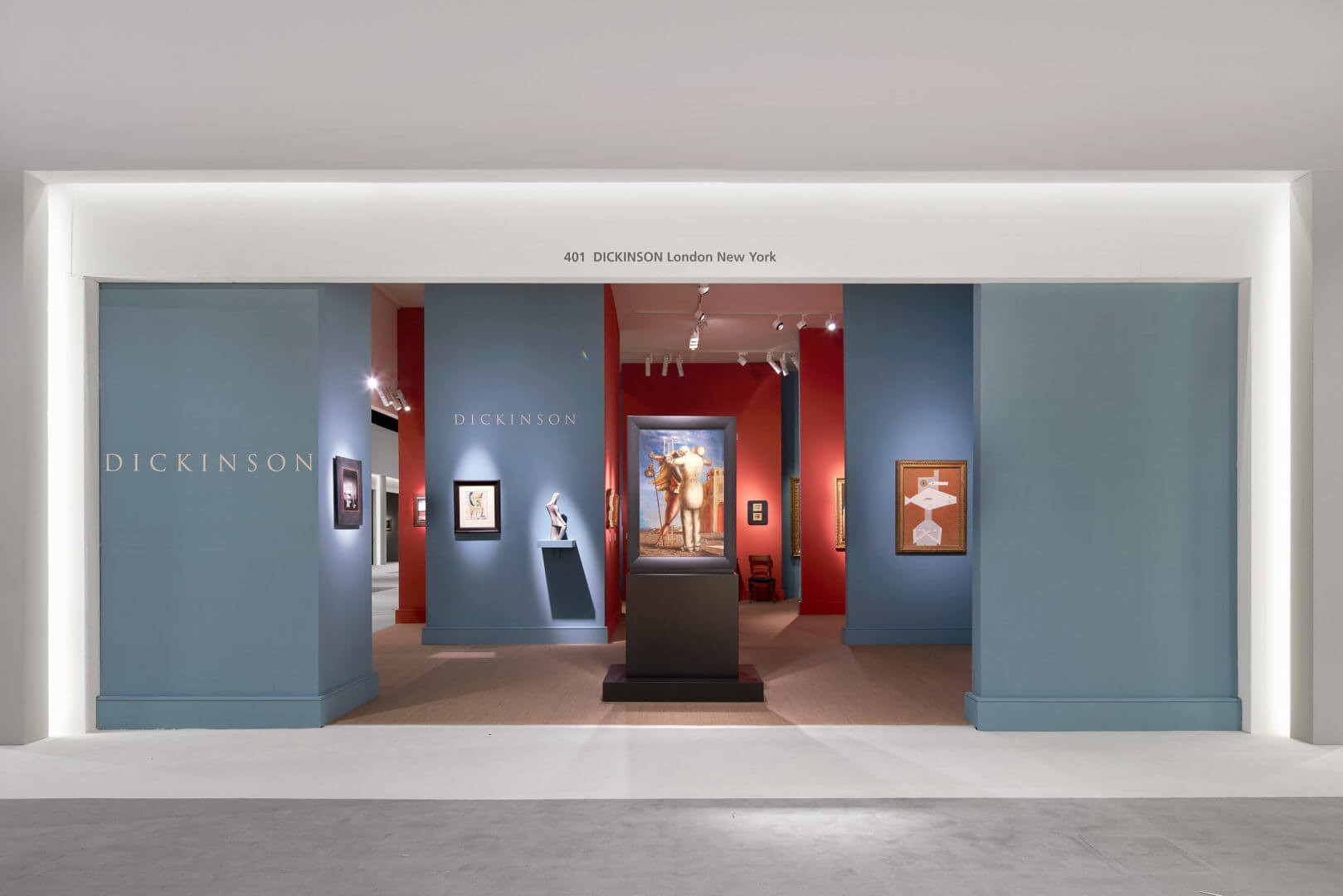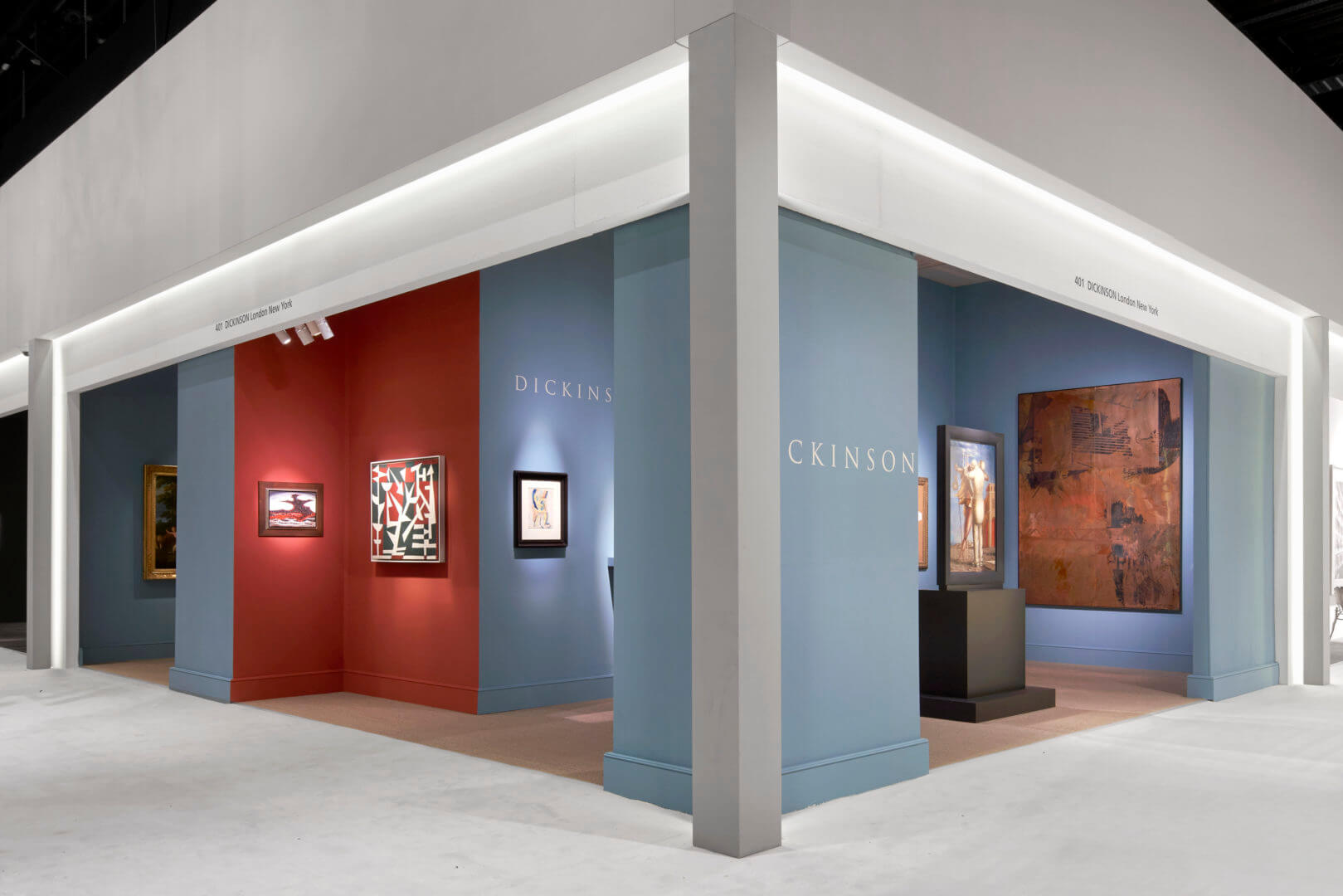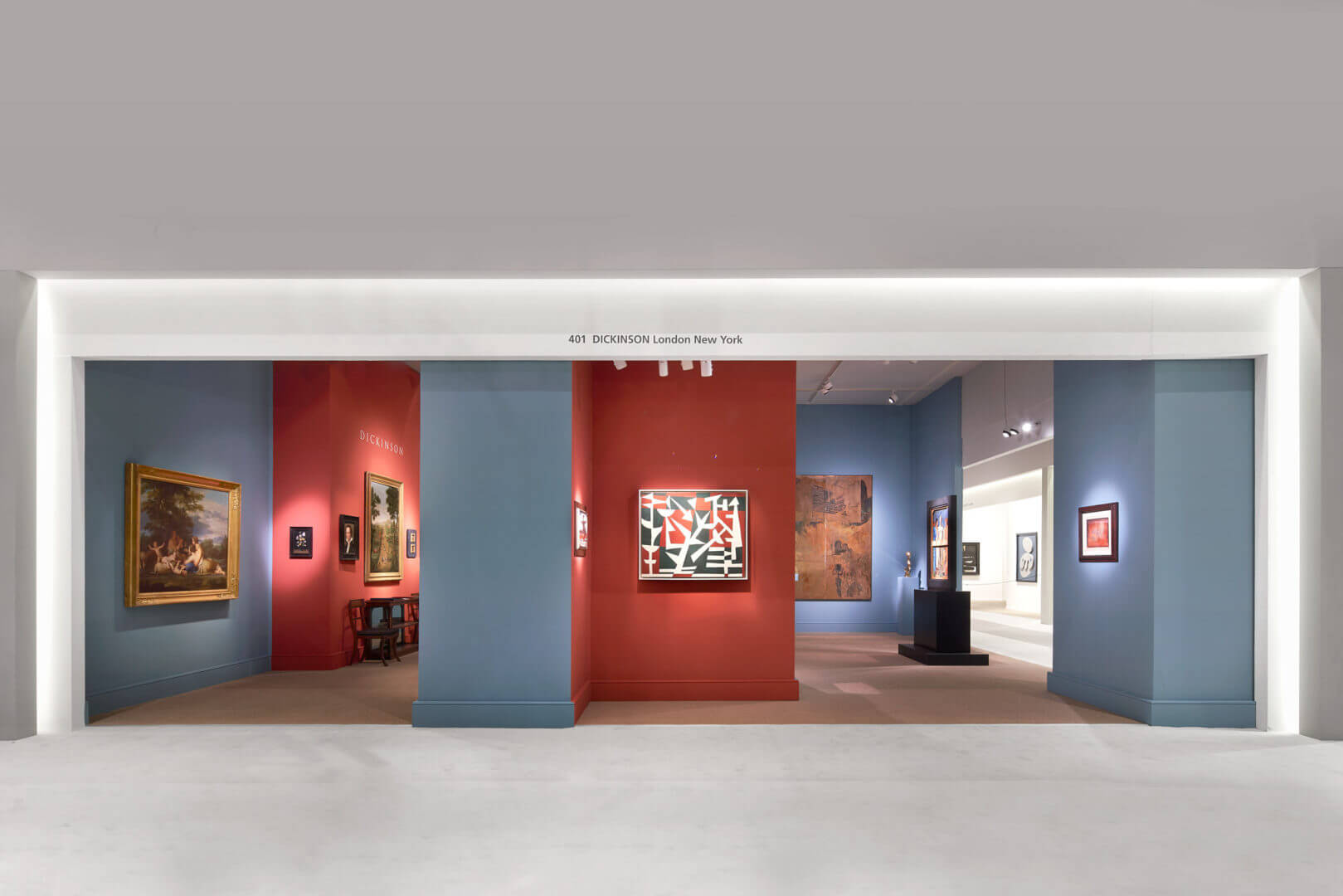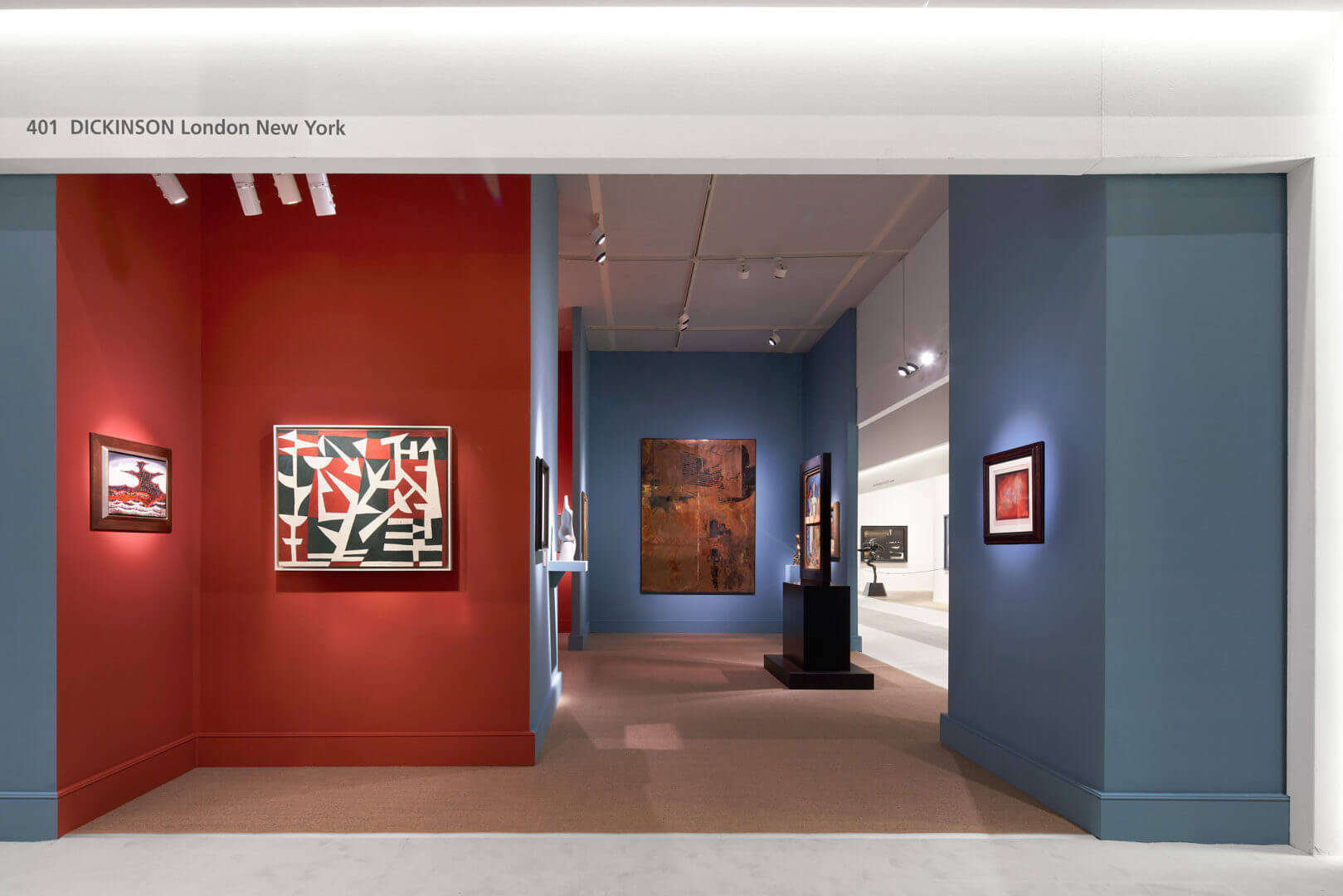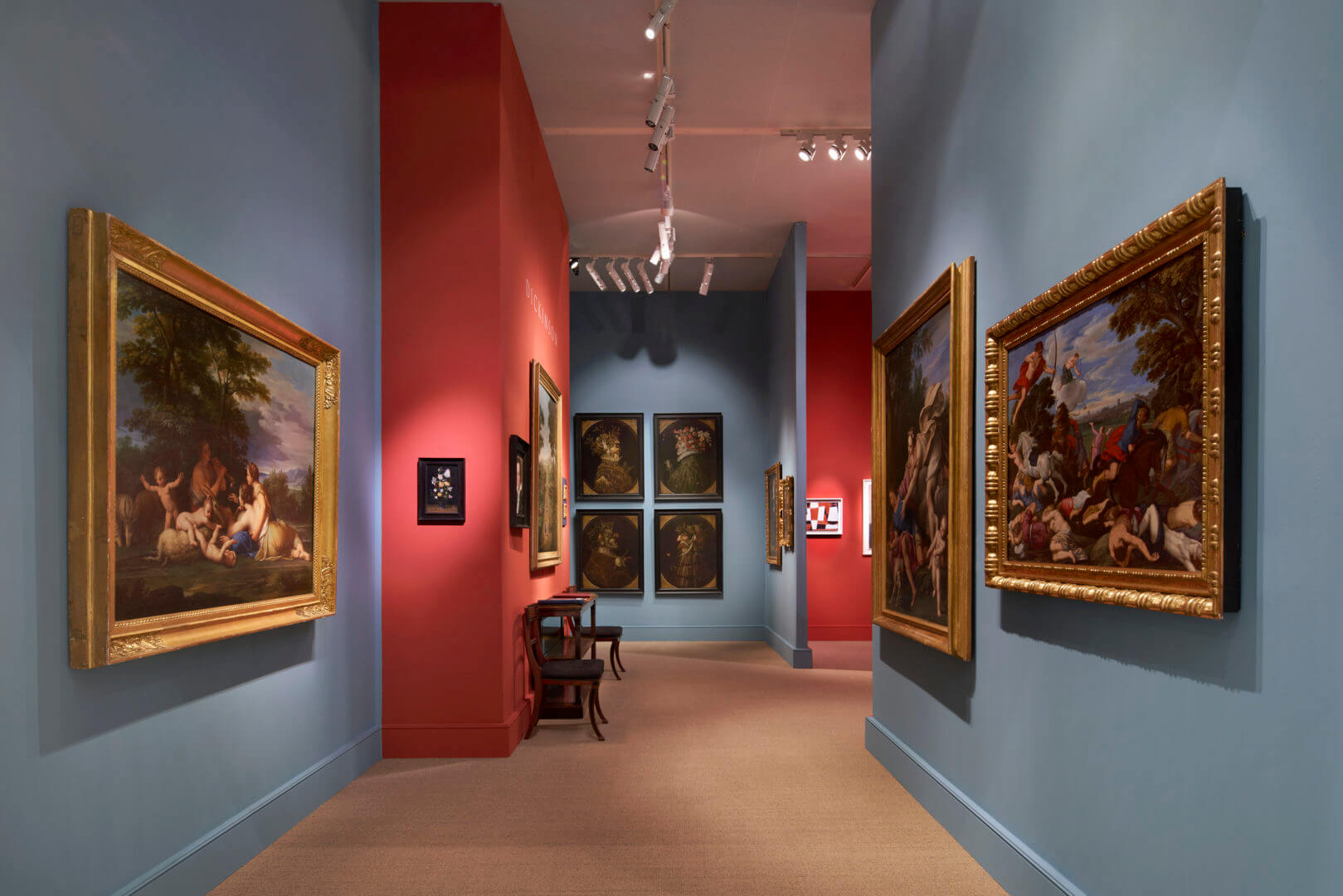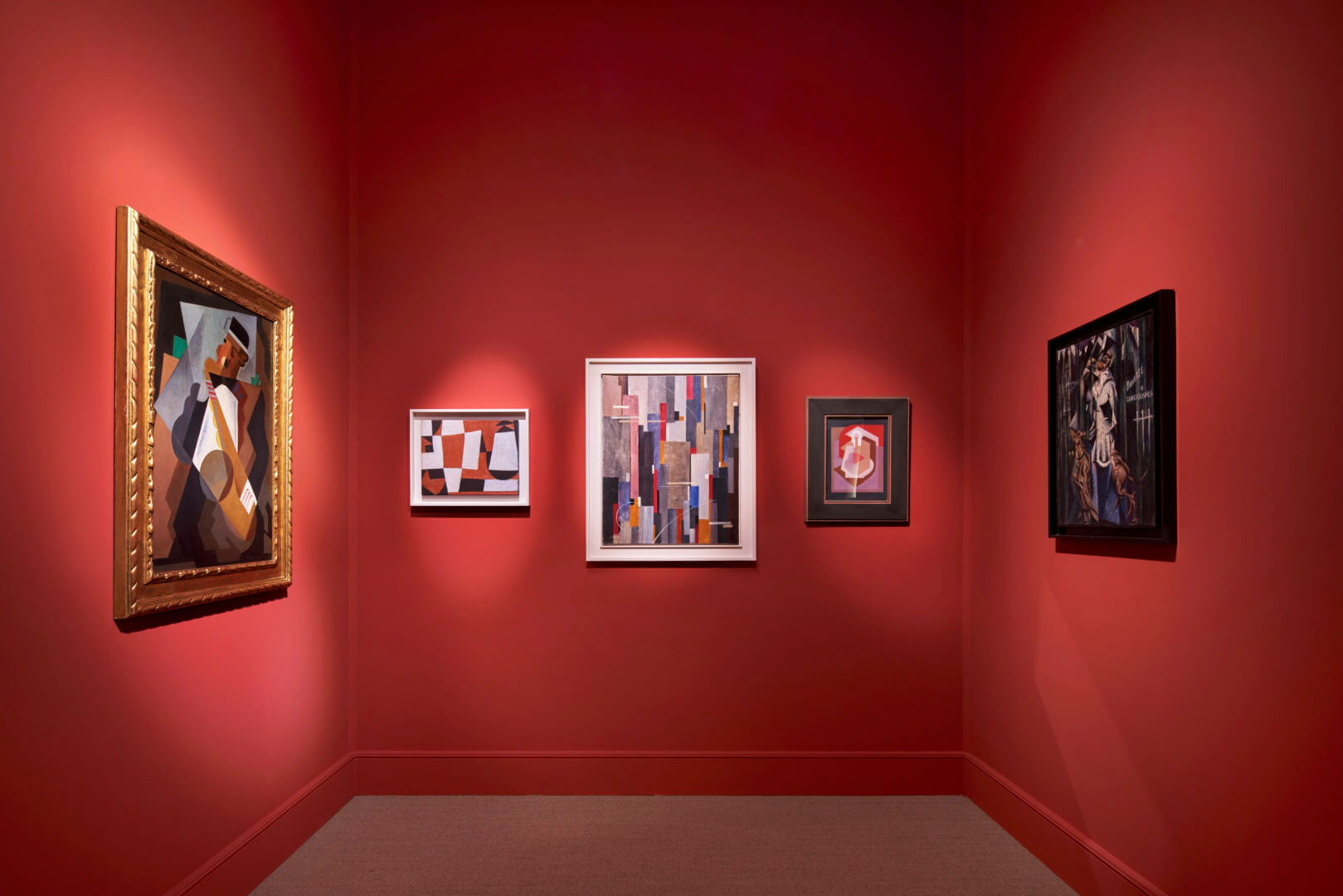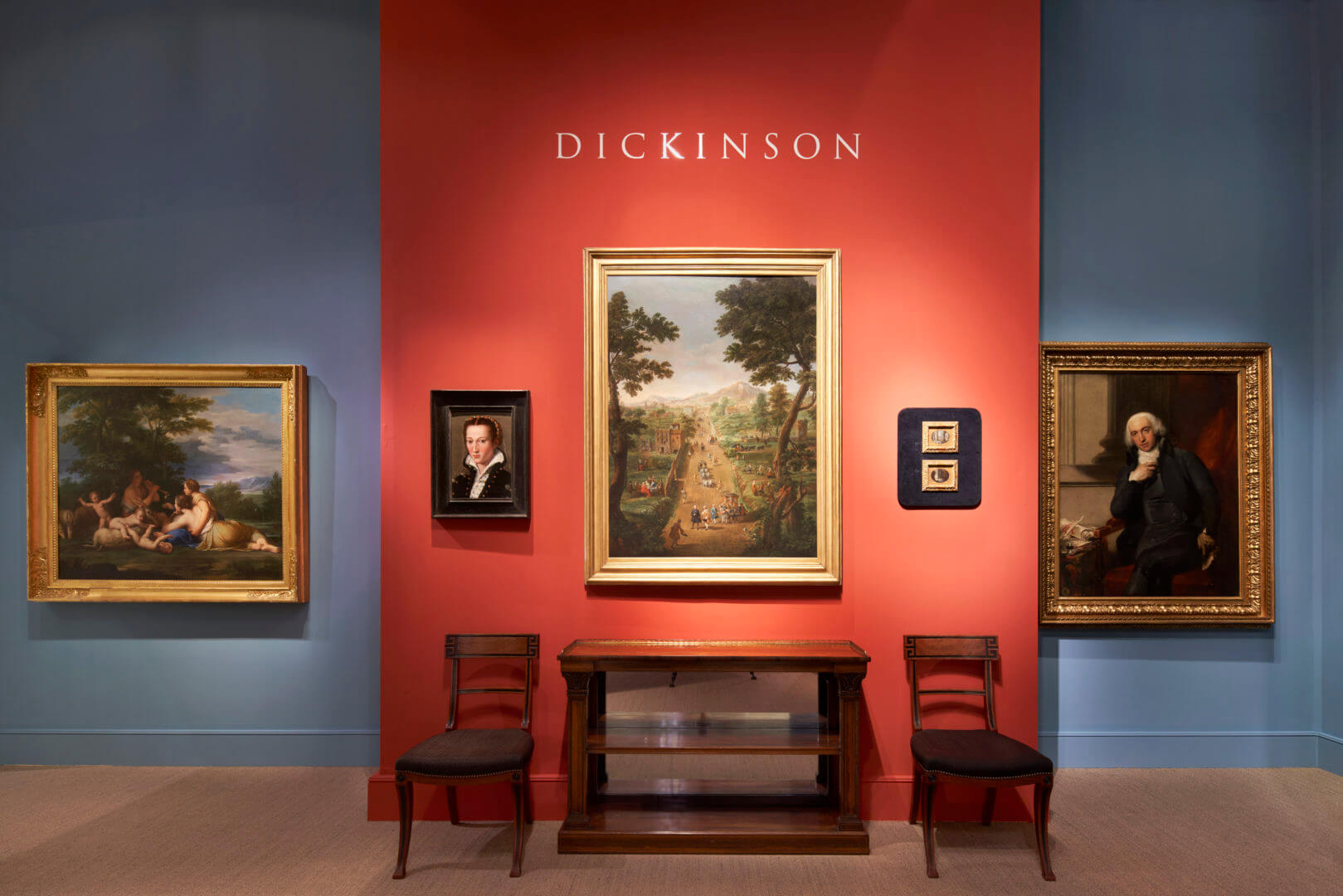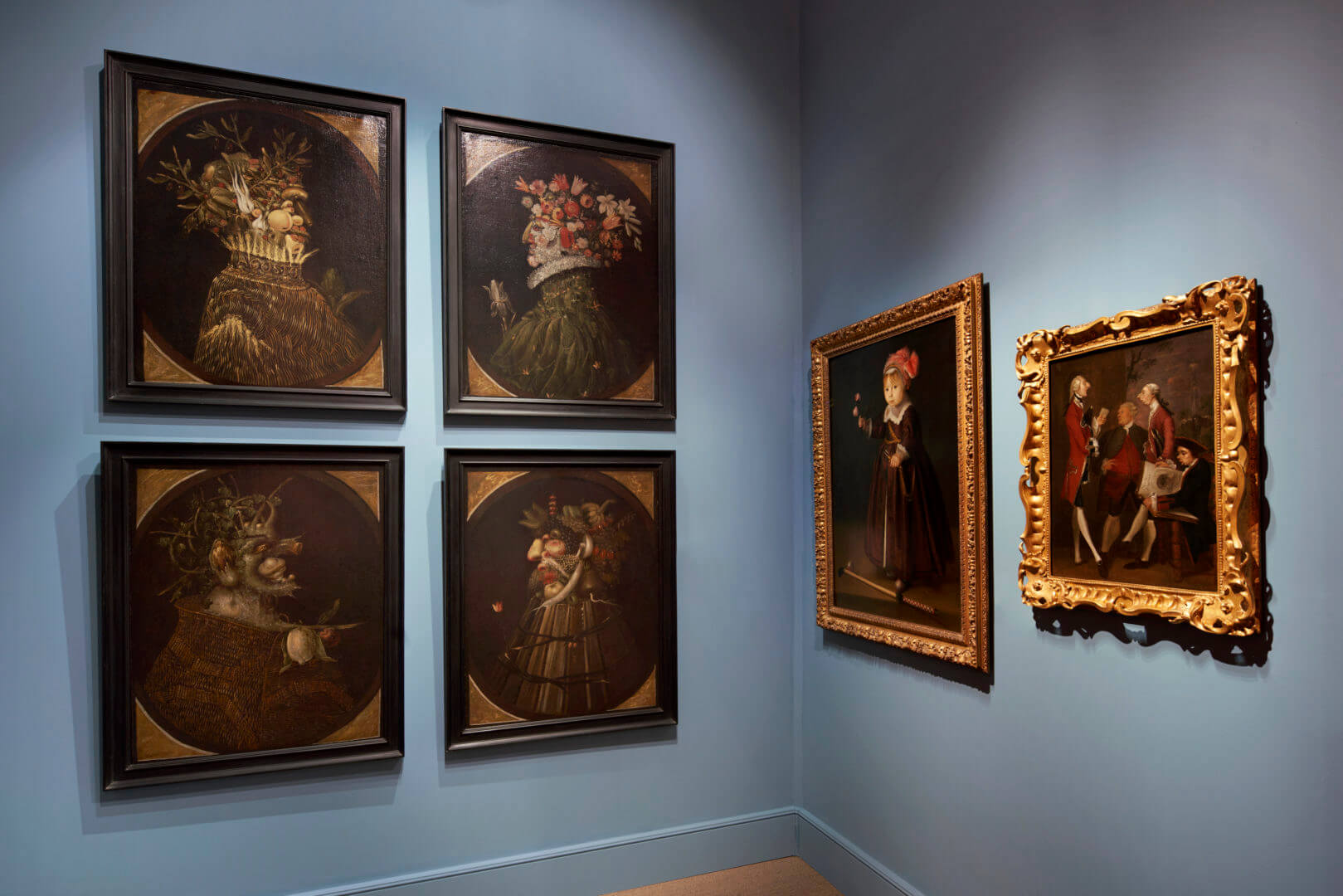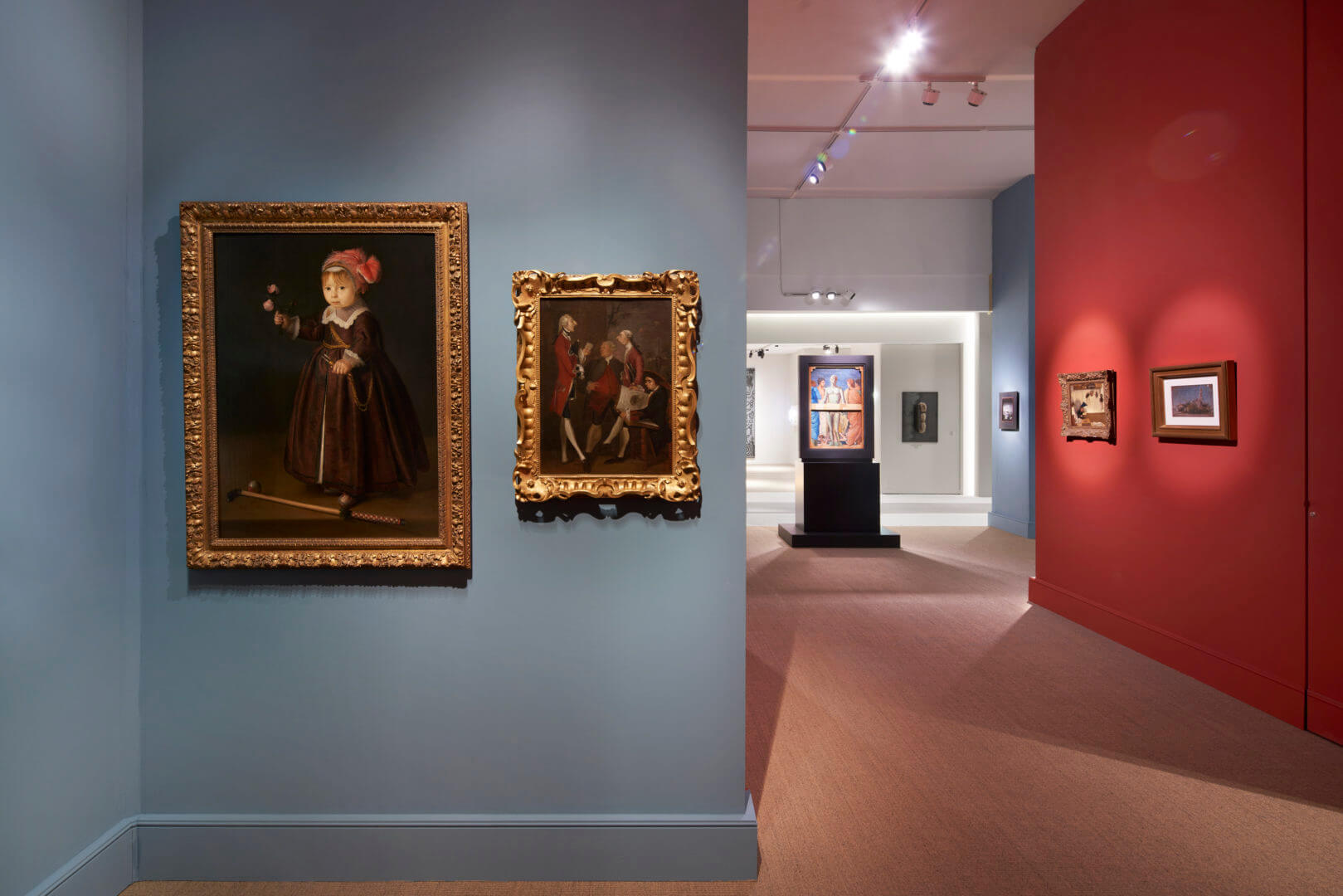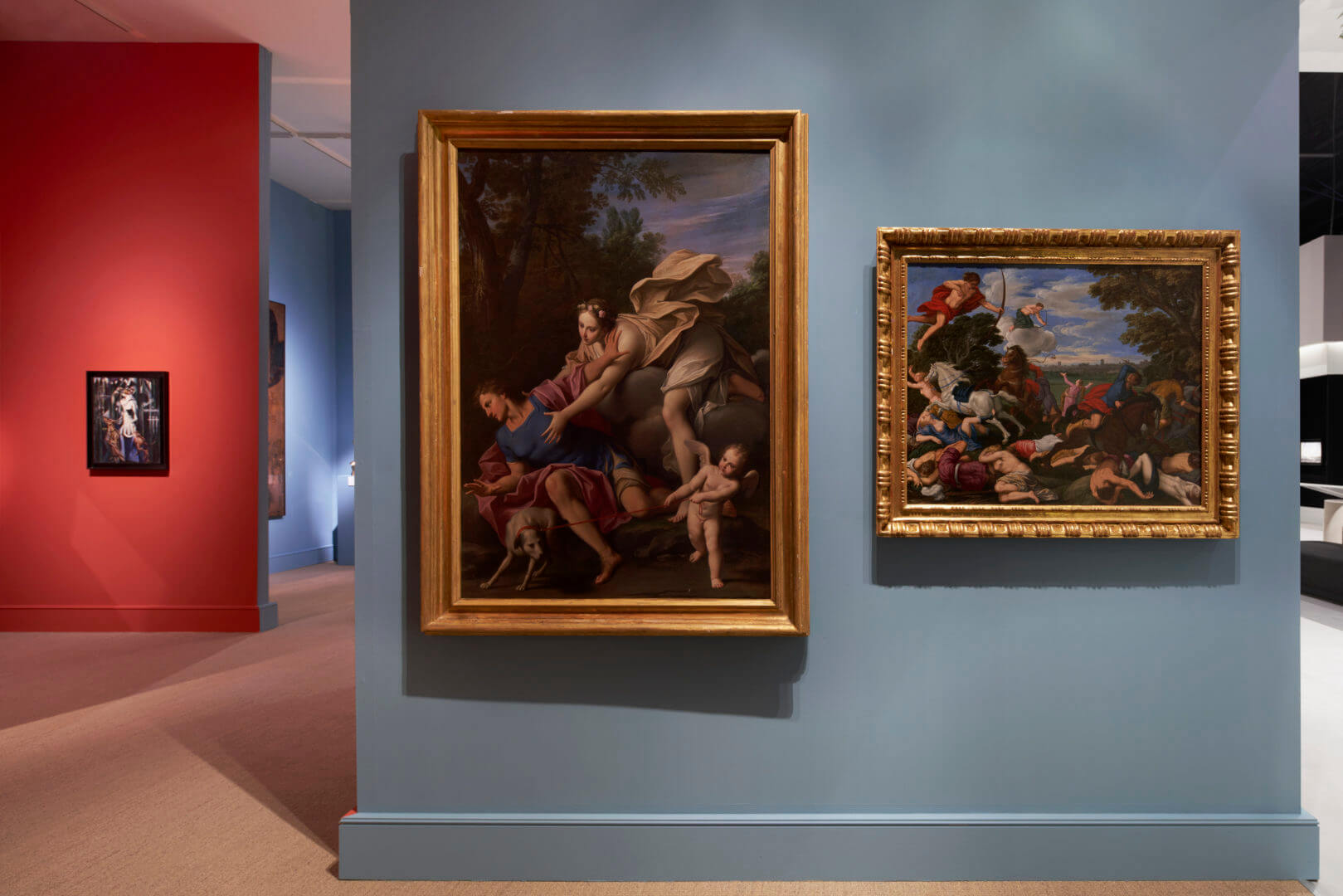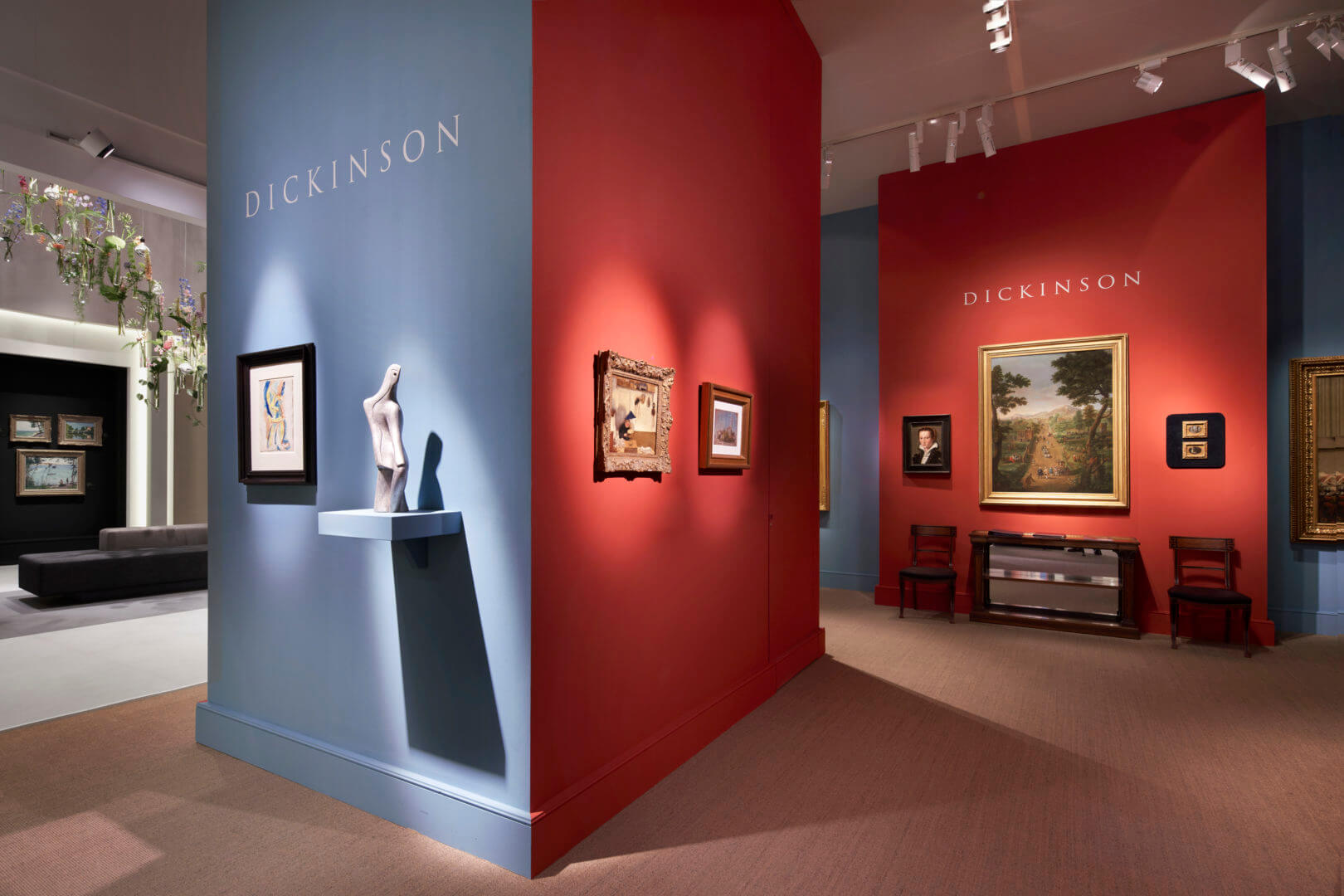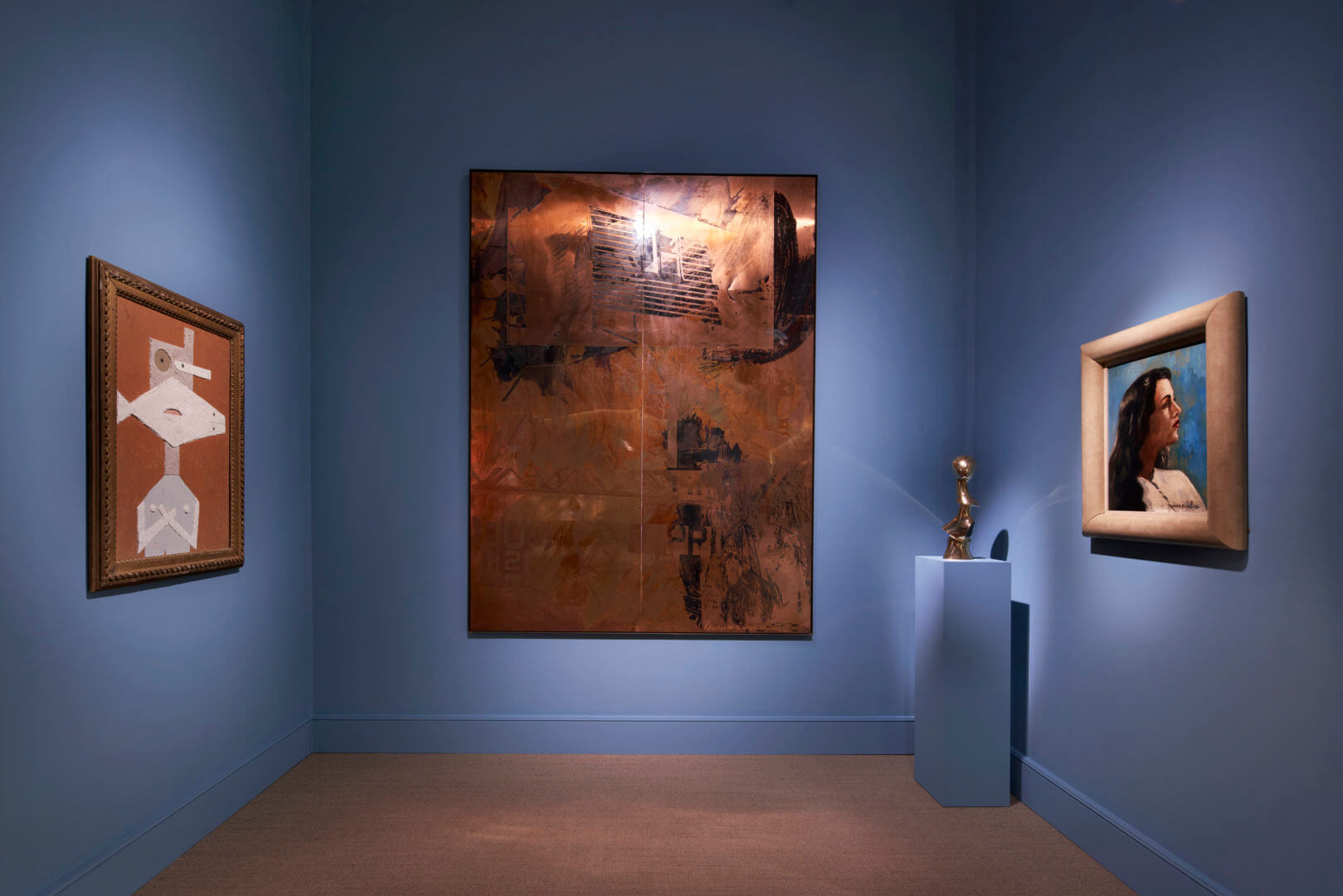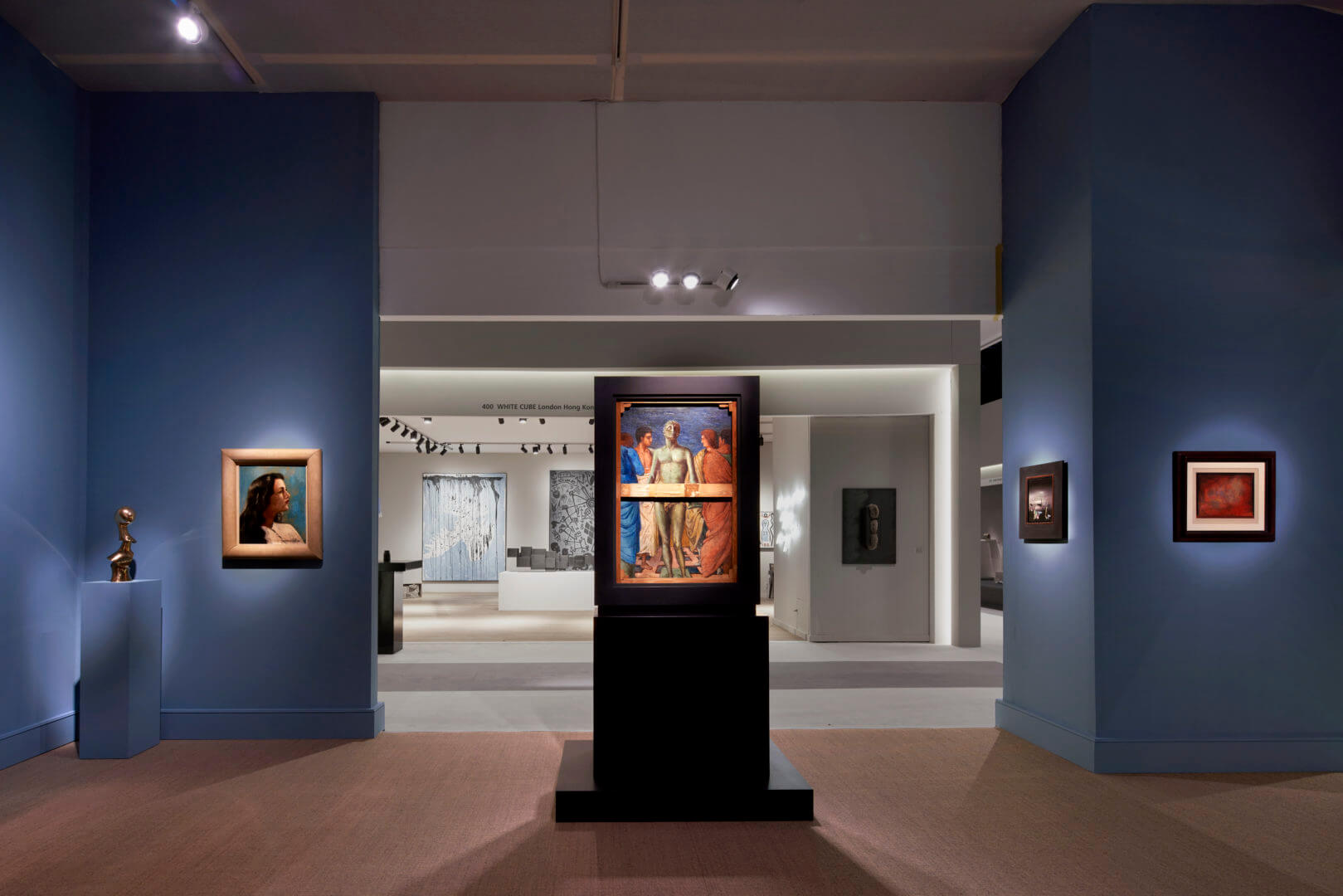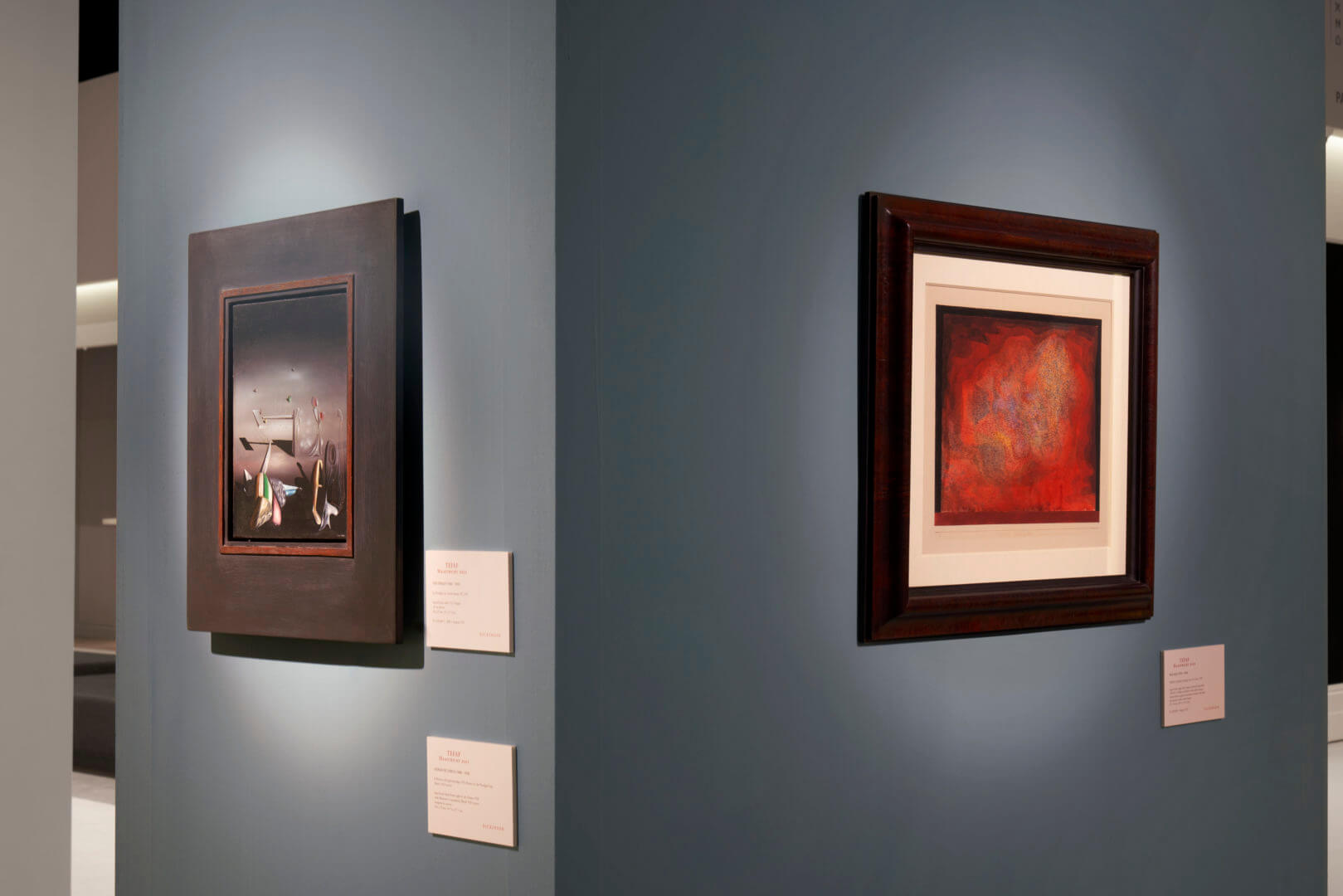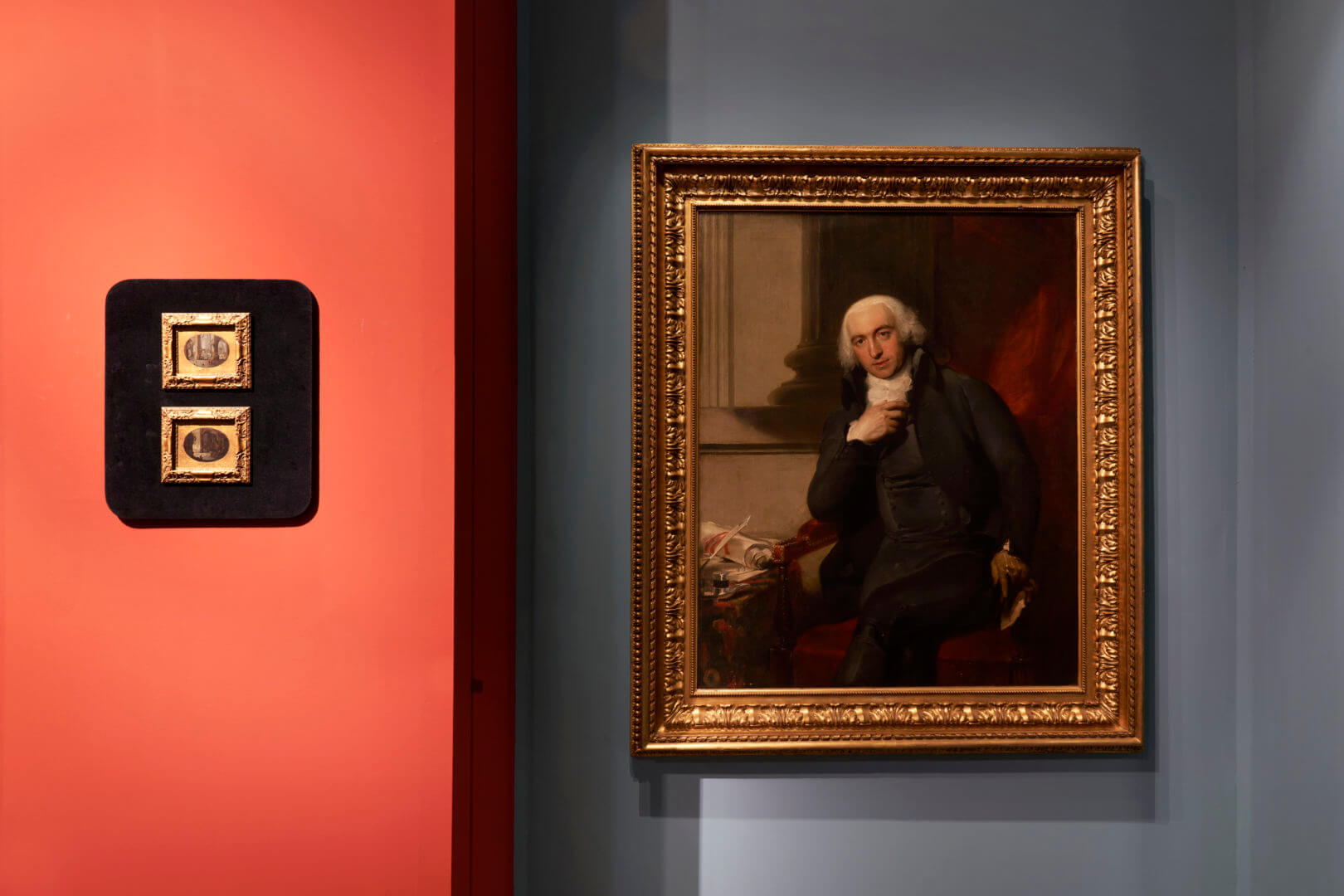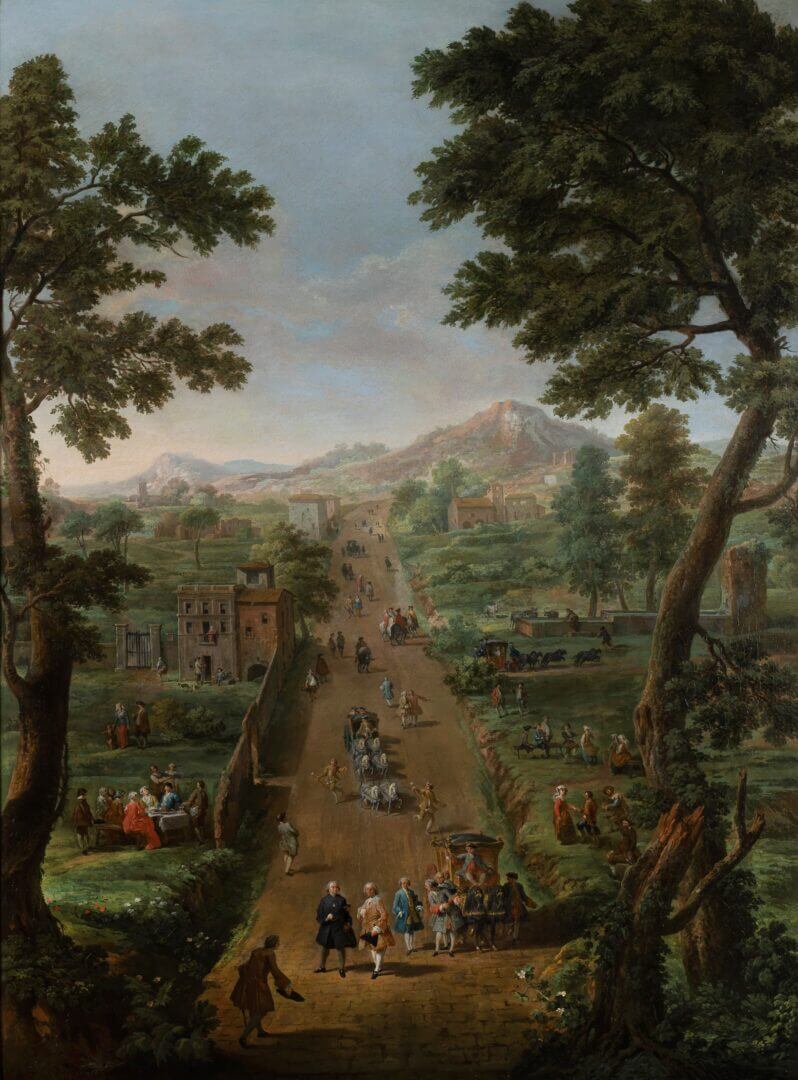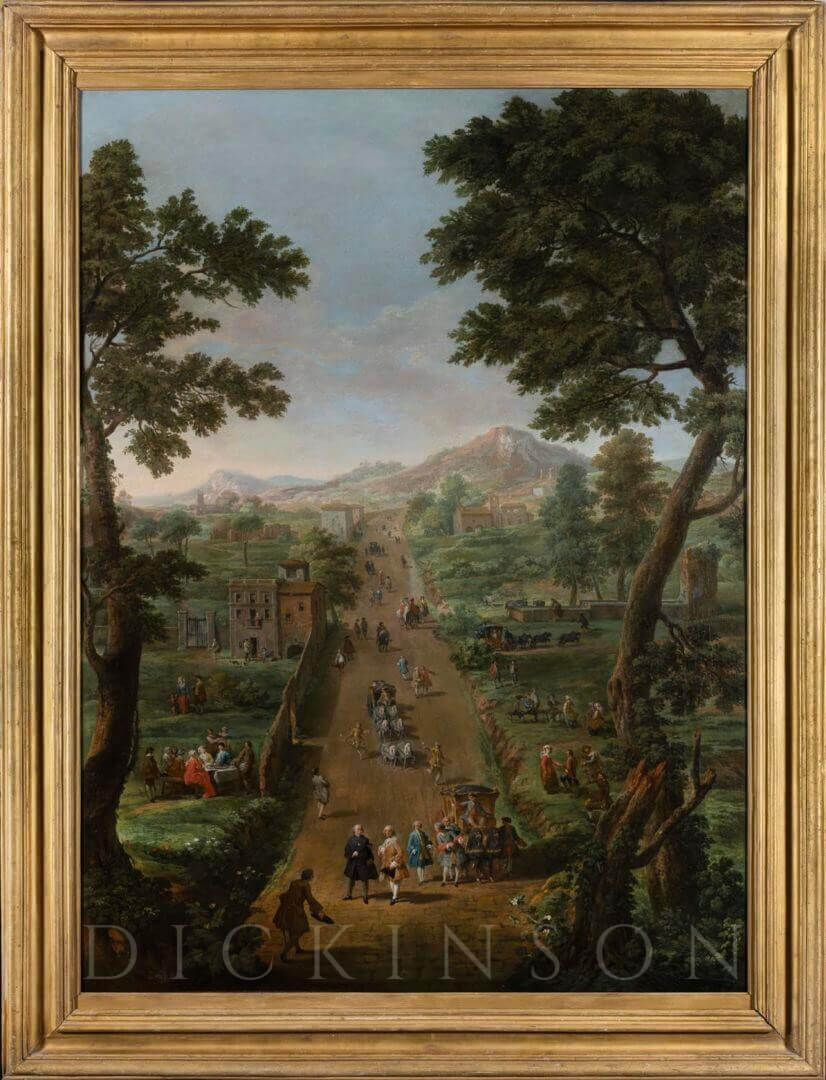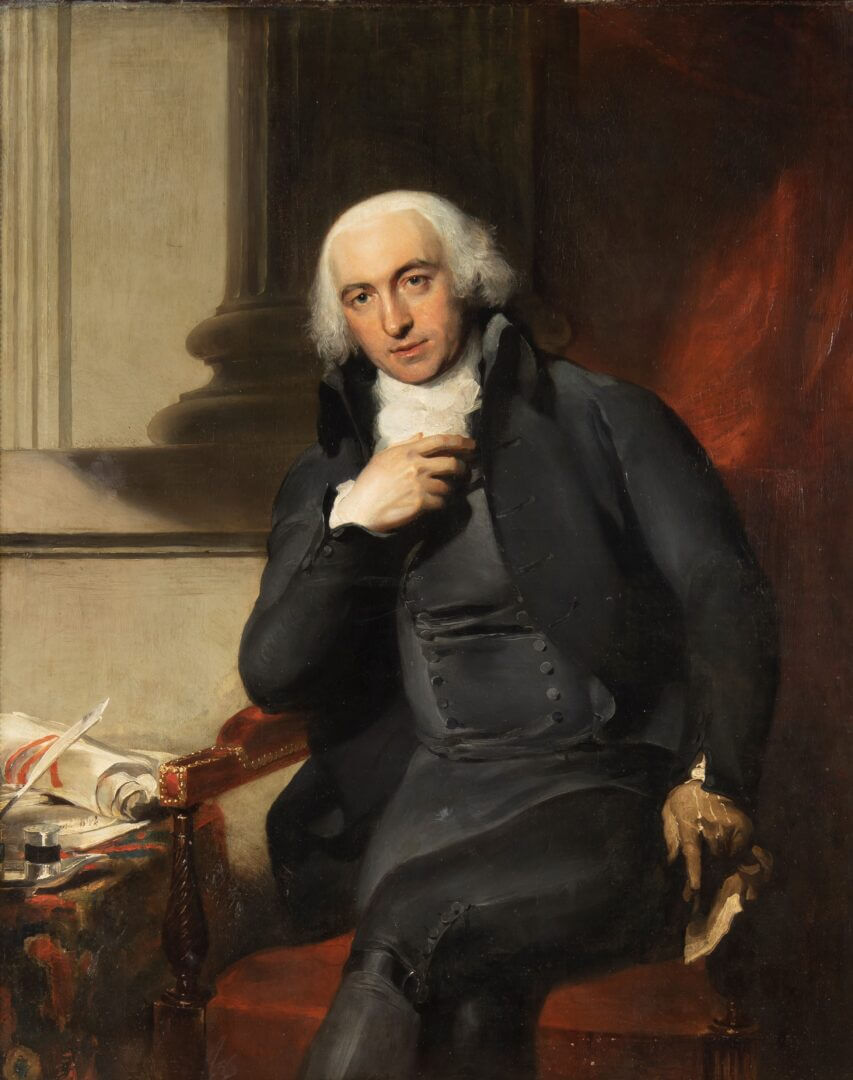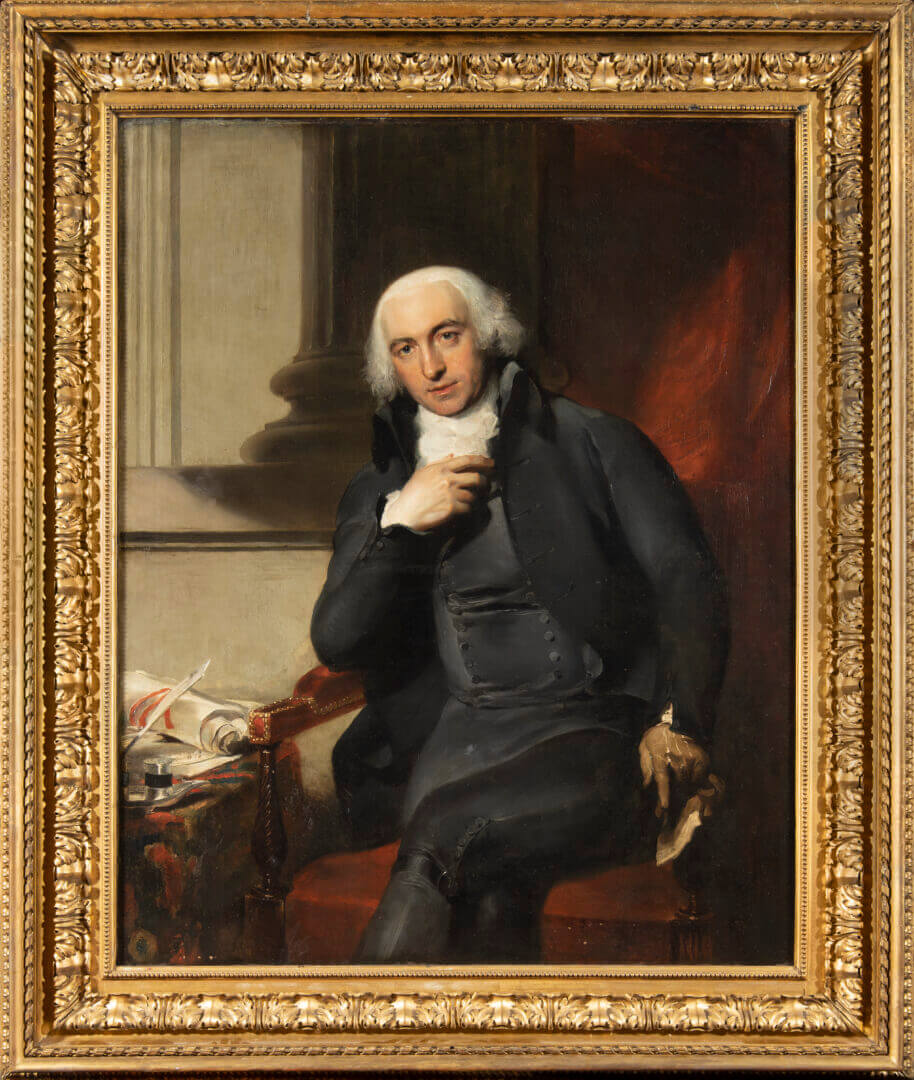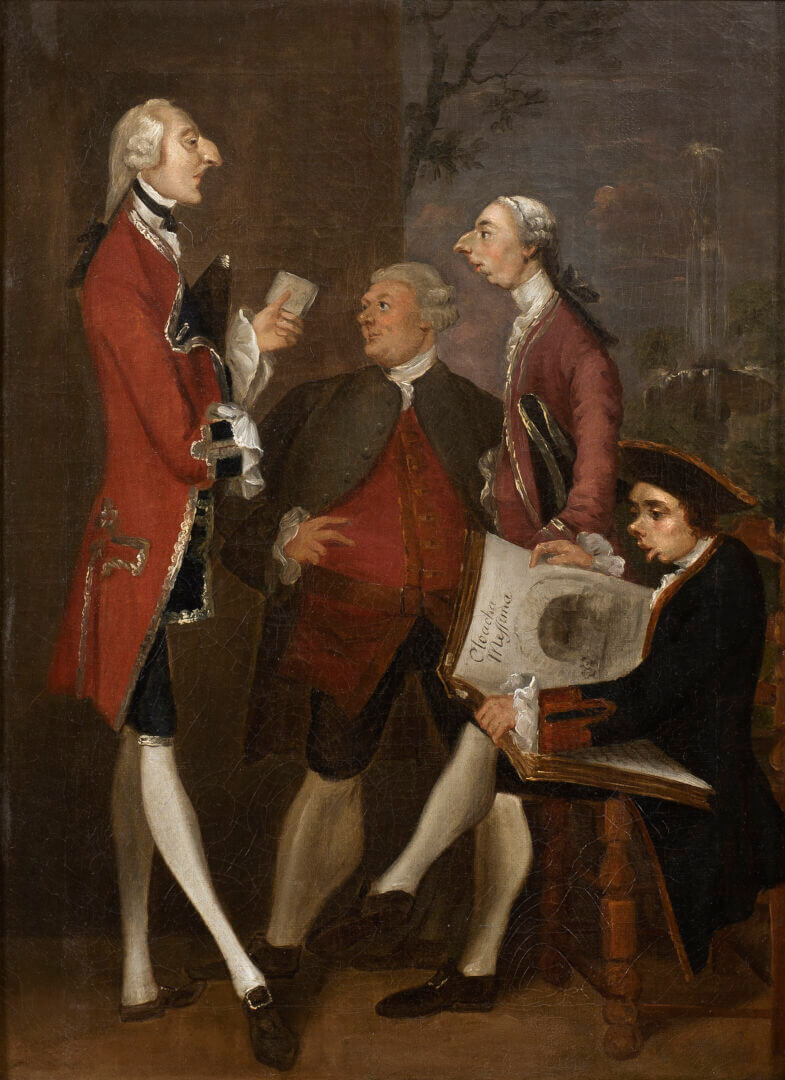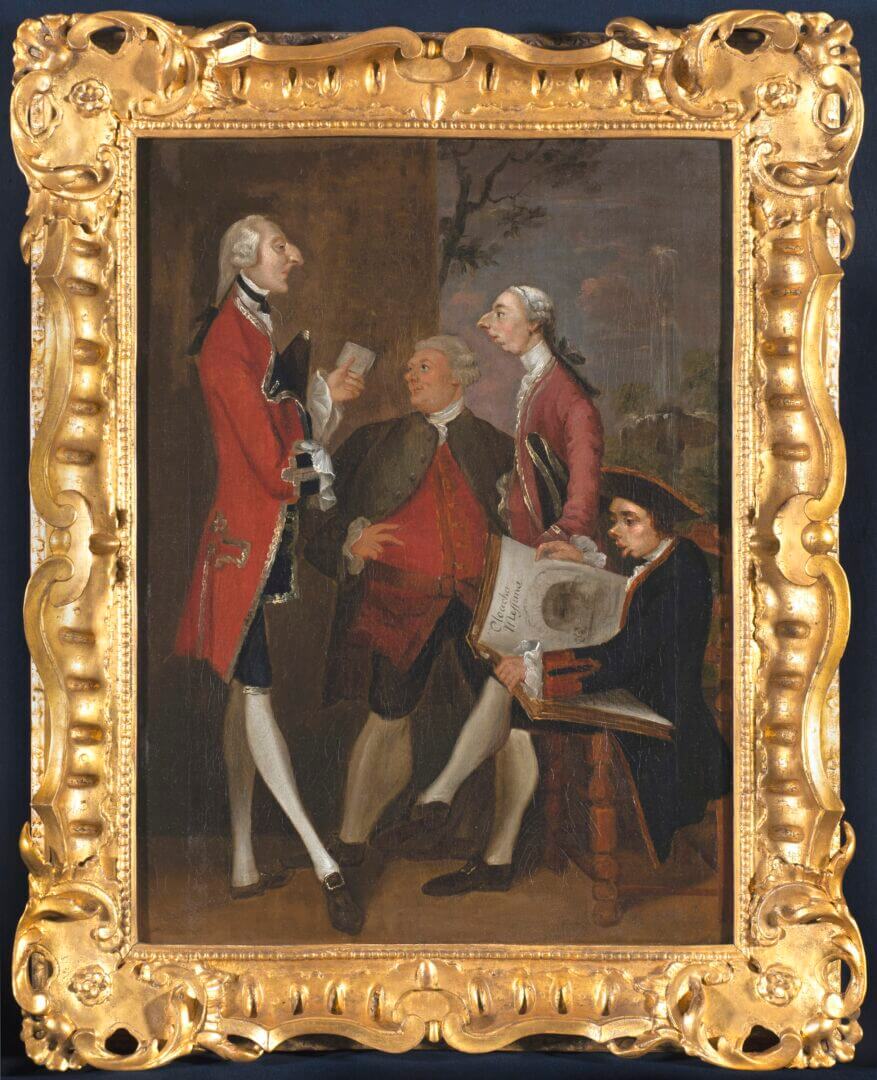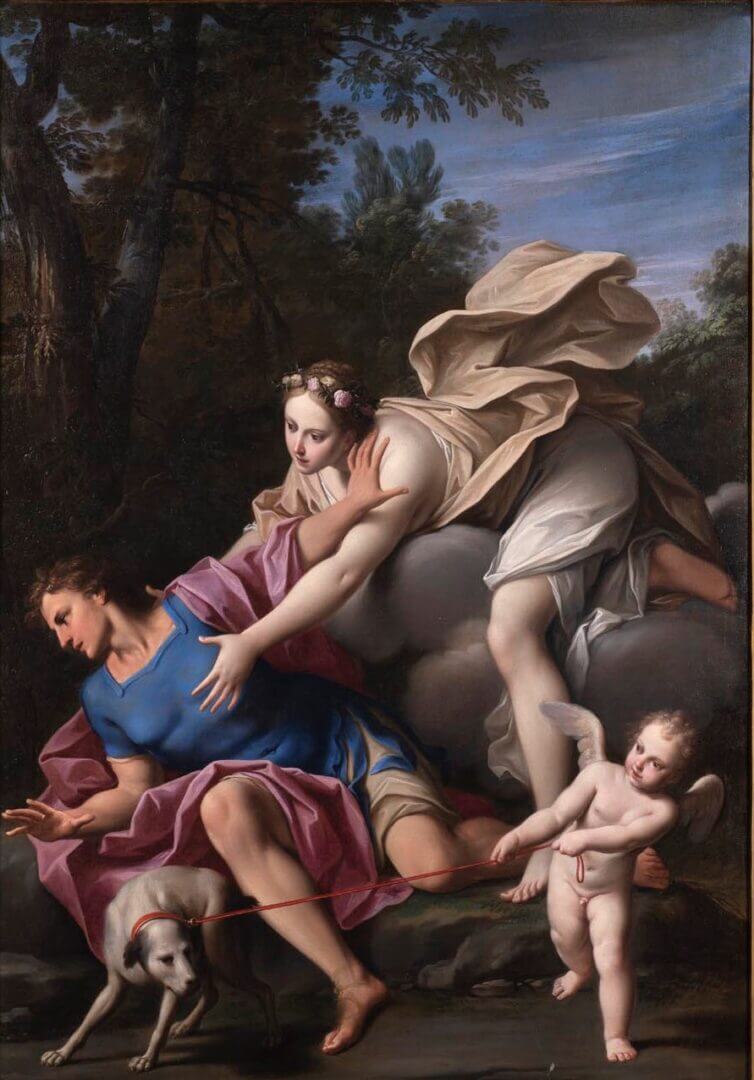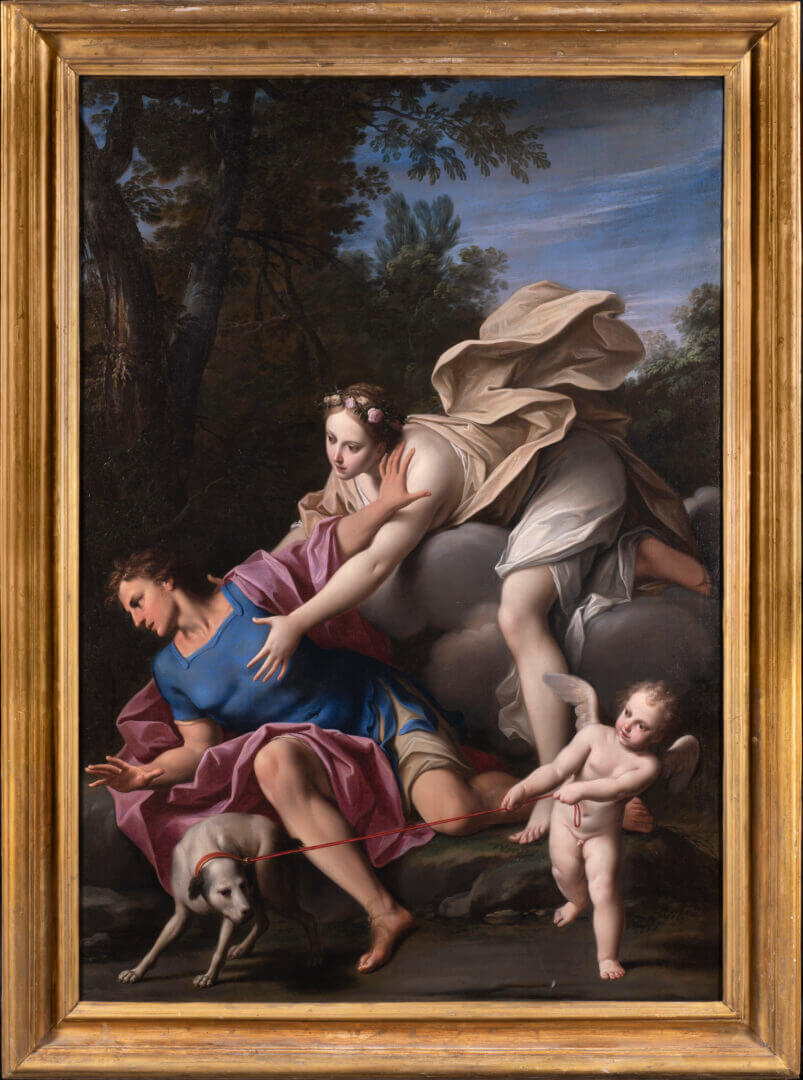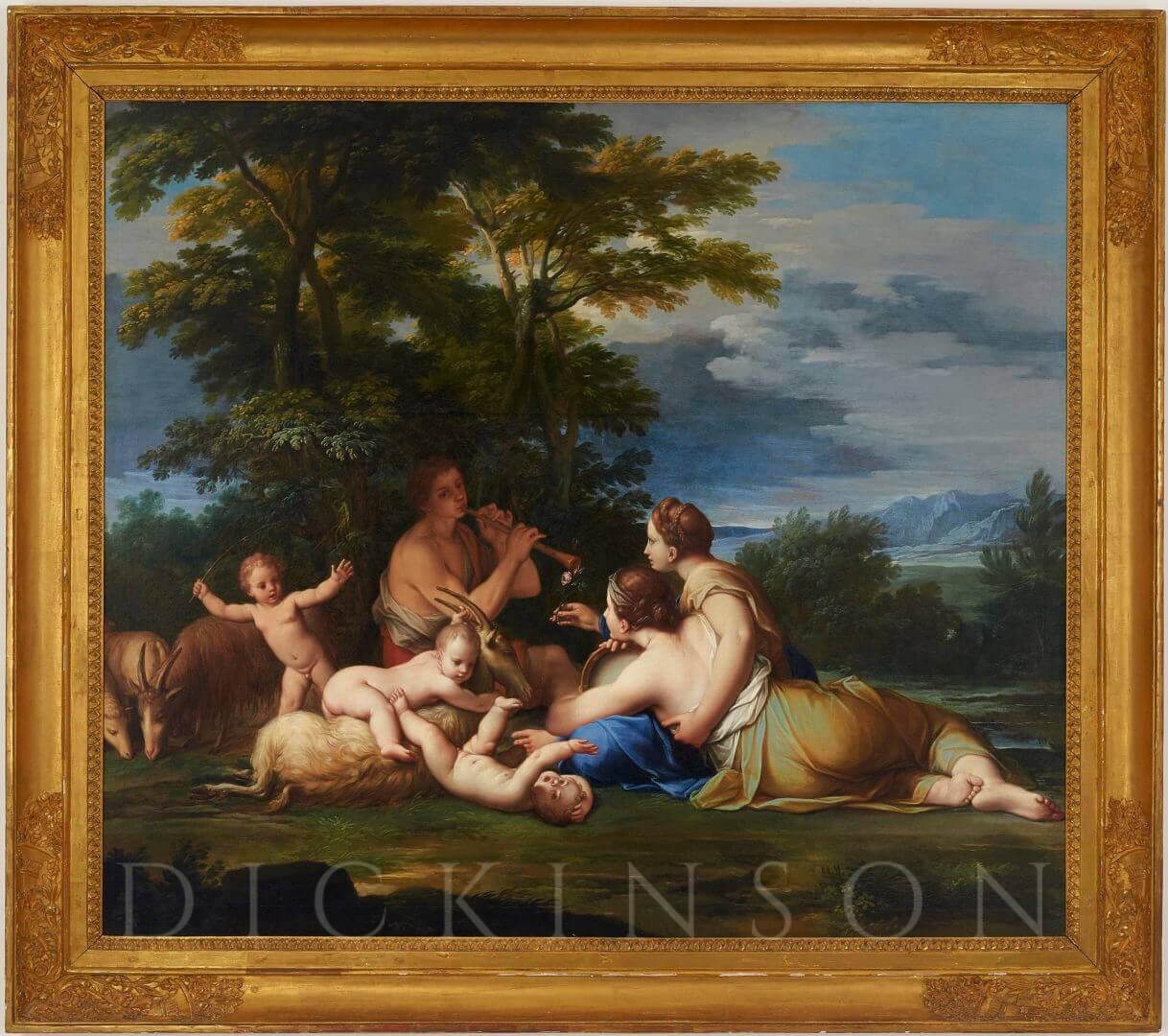Dickinson is delighted to return to TEFAF Maastricht for the fair’s 2022 edition, bringing a range of stand highlights from the Old Master, Impressionist, Modern and Contemporary categories. The group is led by a remarkable and extremely rare double-sided painting by Metaphysical artist Giorgio de Chirico, Il Ritorno del figliol prodigo (The Return of the Prodigal Son), and by Robert Rauschenberg’s highly important Brulée, part of the Borealis series on copper and ultimately born out of the ROCI (Rauschenberg Overseas Cultural Interchange) project. These are exhibited alongside a selection of Impressionist works on paper, Cubist pieces, and a significant Surrealist group, as well as extremely fine Old Master landscapes and portraits by Allori, Canaletto and Neefs the Elder, Lawrence and Panini, among others.
The Surrealist group is led by De Chirico’s enigmatic Il Ritorno del figliol prodigo (1924), recently discovered to have been commissioned in Rome by Surrealist poet Paul Éluard, and was painted on the reverse of Mercurio e i metafisici, executed just four years earlier and in a completely different style for critic and publisher Mario Broglio. The rediscovery of De Chirico’s earlier composition took place only in 2007, but, considered together, the two sides illustrate some of the most ground-breaking innovations made by De Chirico in the early 1920s – encompassing Classicism and ritorno all’ordine, a Biblical parable, and even diverse techniques in tempera. Further Surrealist highlights include superb examples by Jean (Hans) Arp, Viktor Brauner, Paul Klee, Man Ray, Francis Picabia and Yves Tanguy.
Impressionist and Post-Impressionist works include both American and European examples in oils and watercolour, by James Abbott McNeill Whistler, Childe Hassam, and Édouard Vuillard. Dickinson is also showing a group of works featuring Cubism and its ongoing reach; among the featured pieces are a highly important abstract by Jean Crotti, Orchestration (1924), Picasso’s important early watercolour Nu Agenouille (1908), María Blanchard’s Le Saxophoniste (1919), a hand-tooled sculpture by Alexander Archipenko, and paintings by Cuban-American Carmen Herrera.
The Contemporary room is led by Rauschenberg’s Brulée (1991). This painting grew out of the ROCI series, which dominated his output between 1984 and 1991 and saw Rauschenberg attempt to draw attention to human rights issues in areas of conflict. Brulée belongs to the Borealis series – so-called because the visual effects of these metallic pieces reminded the artist of the mysterious, glowing lights of the Aurora Borealis – in which acids transform the metal support into a pseudo-collage of imagery and effect using a range of layered motifs.
The Old Masters room is led by some new discoveries with significant scholarly interest. Among these is Alessandro Allori’s Presumed portrait of Eleonora di Francesco I de’Medici (1567 – 1611), whose probable identity was only determined in 2019, and a rare example of a collaboration between Giovanni Paolo Panini and Paolo Anesi. A pair of oval church interiors on copper supports feature figures by Canaletto inserted into earlier compositions by Pieter Neefs the Elder. The still life genre, meanwhile, is represented by a finely painting floral composition attributed to Balthasar van der Ast, while Sir Thomas Lawrence’s elegant Portrait of the Rt. Hon. Sylvester Douglas, Later Baron Glenbervie of Kincardine (c. 1792-93) is among the portraiture highlights.

